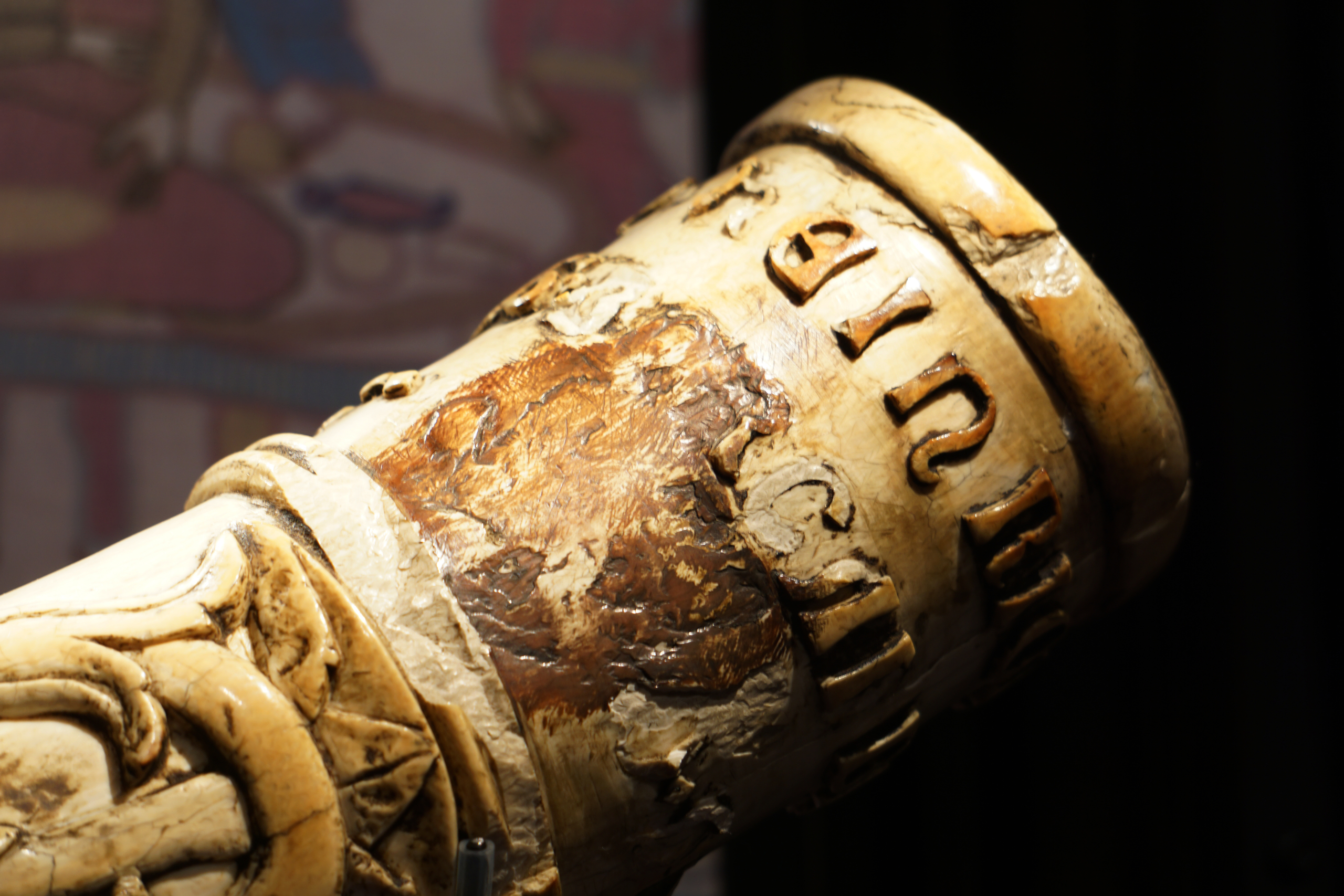
An olifant is a signalling horn carved from an elephant’s tusk. Olifants are said to have originated in Byzantium and were used during the Middle Ages to summon soldiers during battle.
This olifant has a Latin inscription which says “Heinrich of Hohenberg, Abbot of Fulda, in the year of Our Lord 1350”. The horn came to Gothenburg Museum in 1933. Its previous owner said then that it had been in the area around Skara as long as anyone could remember.
It is hard to say exactly when this horn was made. Some experts say it dates from the 1300s whilst others believe it is a copy made in the 1500s.These horns were used into the 1400s. They were then replaced by similar ones made of bull horns. Today trade in ivory is forbidden and elephants are a protected species.
This makes some people consider ivory to be even more attractive and unique. Every year 35,000 African elephants are killed by poachers. Unique objects can be valuable for several different reasons but their common characteristic is that there is only one of them.
If that object is destroyed it can never be replaced.

6801
Olifant
This olifant is a horn that is 60 cm long. It is clearly made of elephant ivory. The colour shifts between ivory white, yellowish and dark brown. The horn is covered by a deeply engraved pattern of leaves and plants. At the narrow end of the horn is a brown mouthpiece to blow into. Around the wide, open end runs a three-row text, engraved so that the letters are raised. The Latin inscription says “Heinrich of Hohenberg, Abbot of Fulda, in the year of Our Lord 1350”.
GM:14319